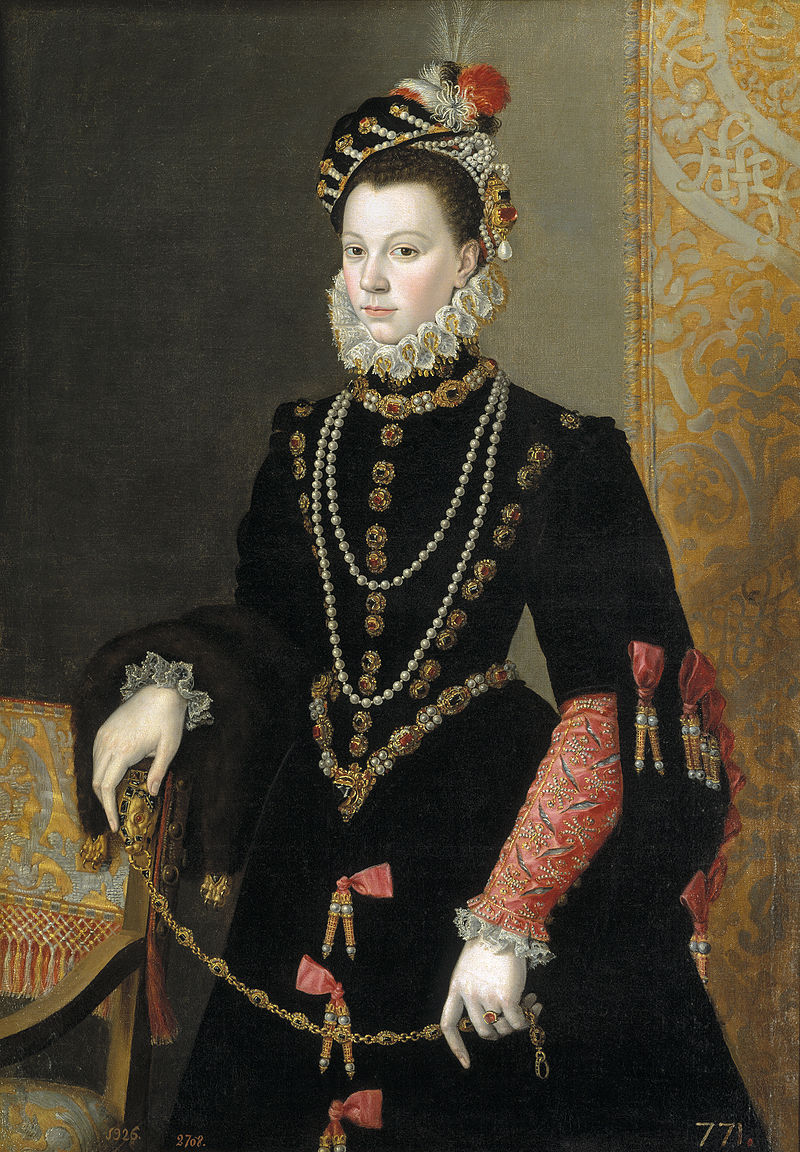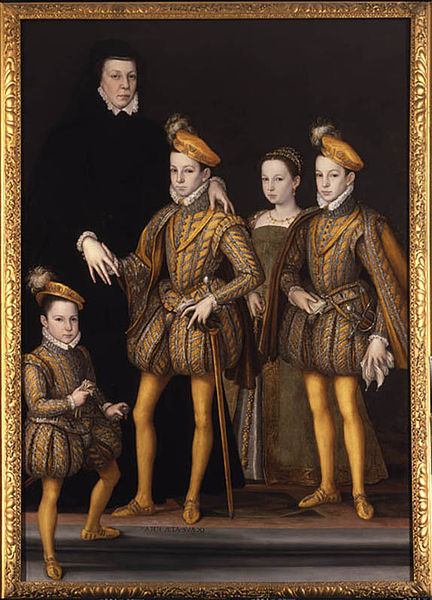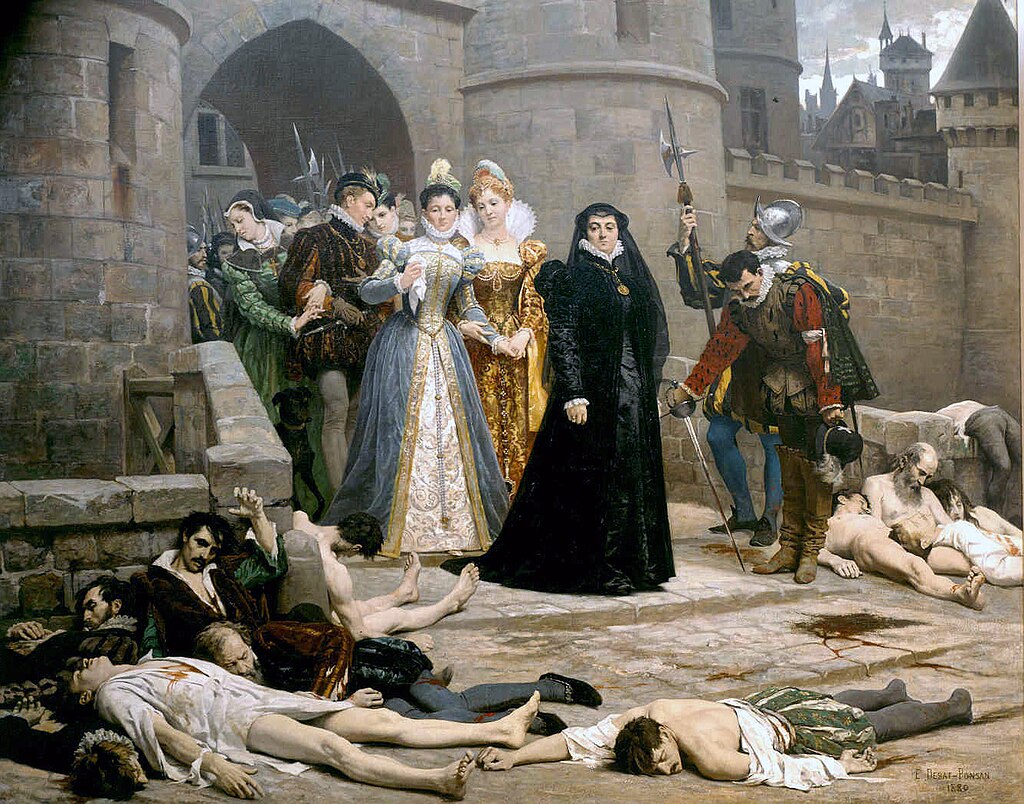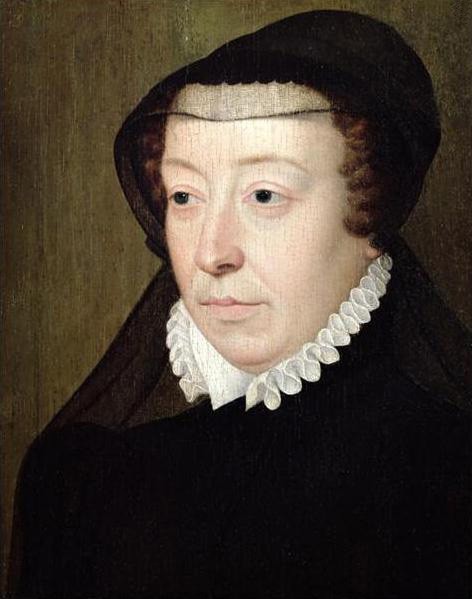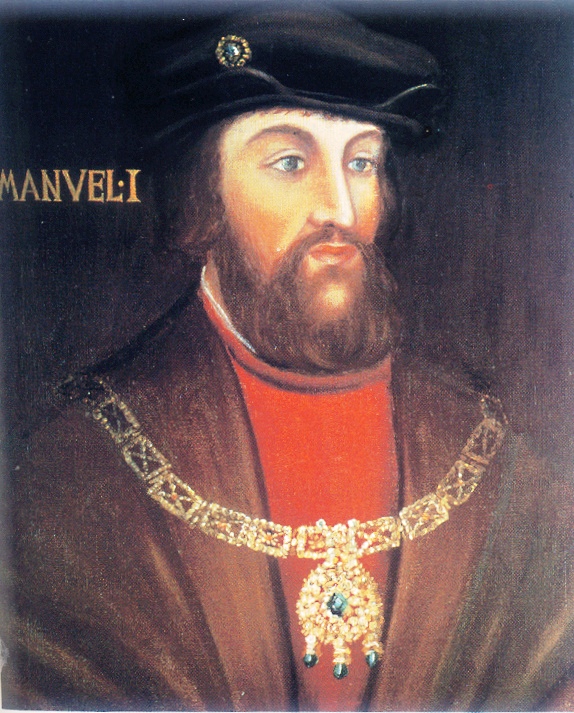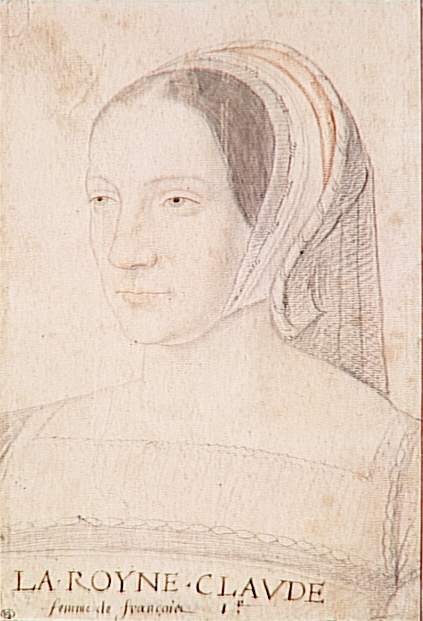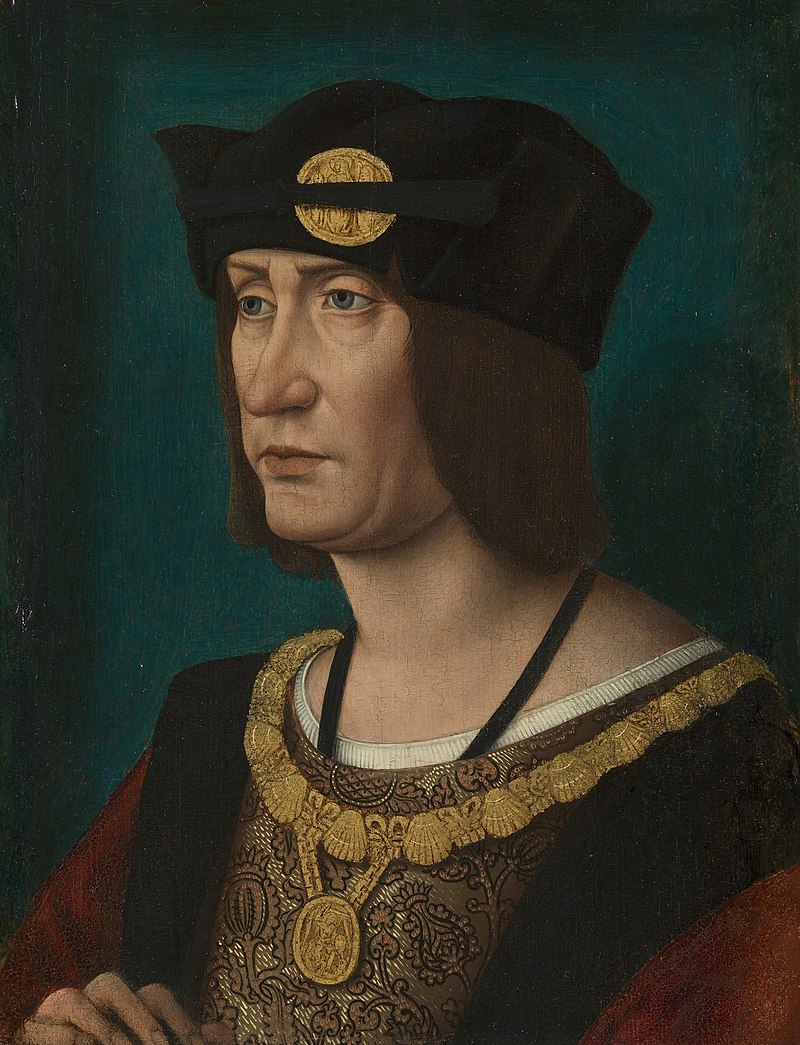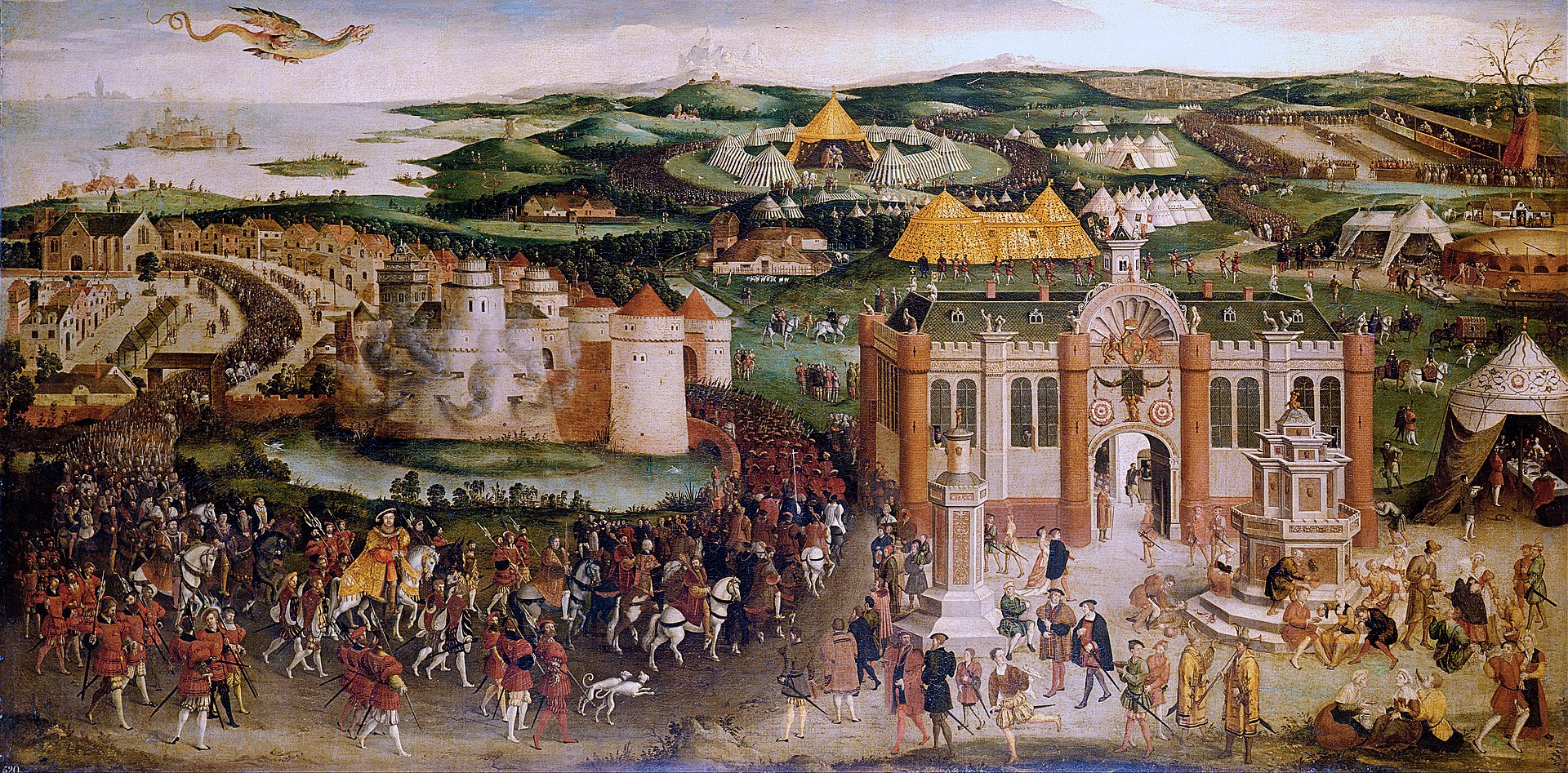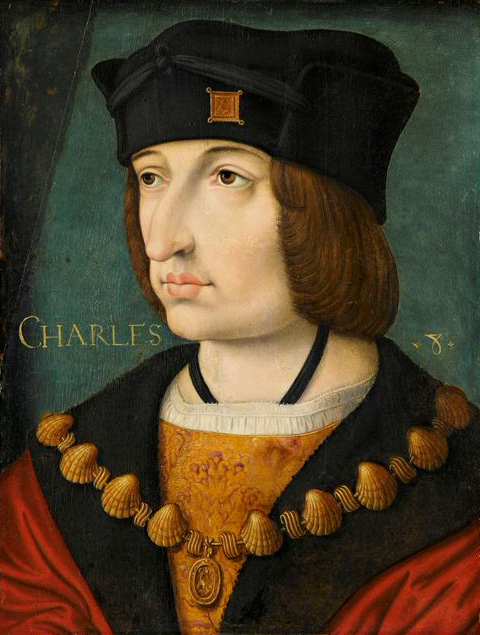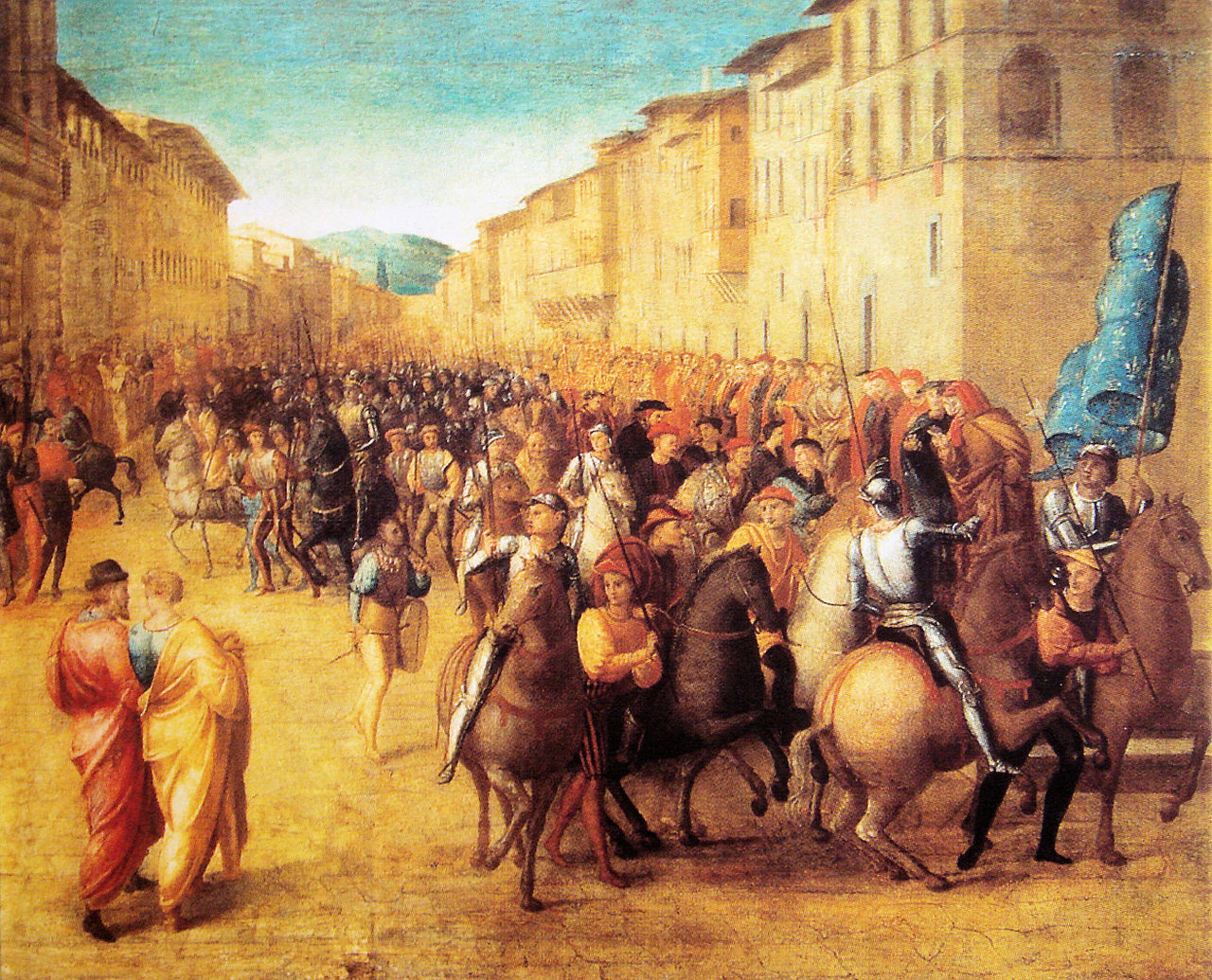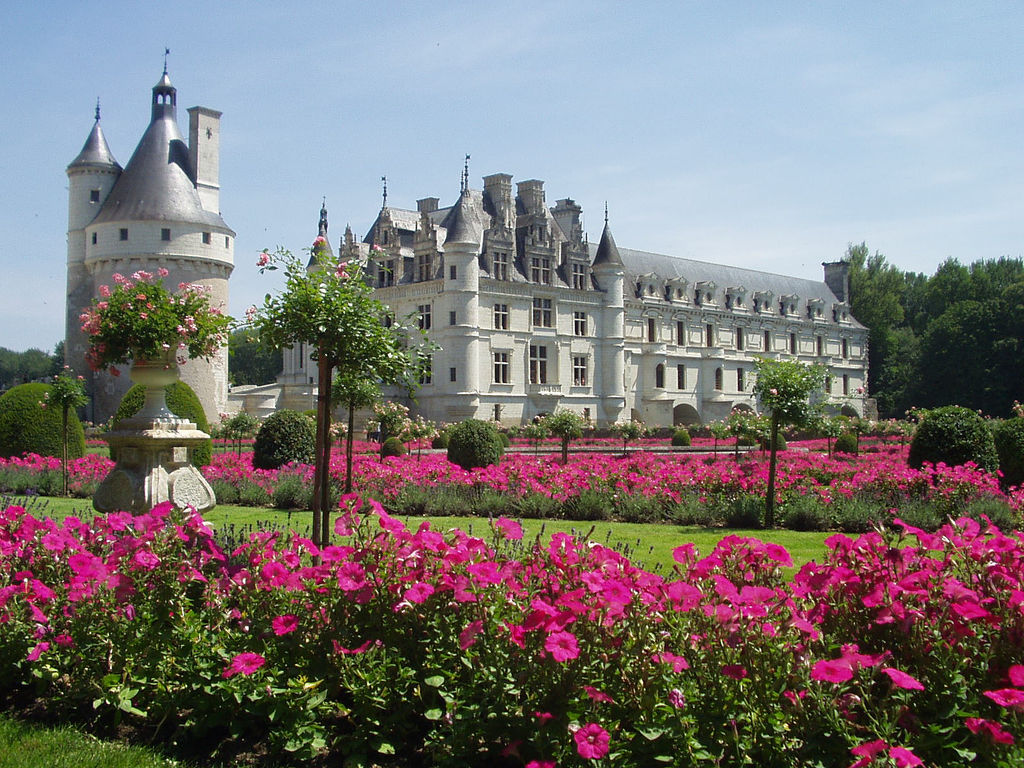by Susan Flantzer © Unofficial Royalty 2020

Charles IX, King of France; Credit – Wikipedia
Charles IX, King of France was born at the Château de Saint-Germain-en-Laye near Paris, France on June 27, 1550. Styled as the Duke of Angoulême at birth, he was the third of the five sons and the fifth of the ten children of Henri II, King of France and Catherine de’Medici. Four months after Charles’ birth, his elder brother Louis died and Charles became second in the line of succession to the French throne after his brother François and was created Duke of Orléans.

Catherine de’Medici with her four youngest surviving children (left to right) Hercule François, Charles IX, Marguerite, and Henri III; Credit – Wikipedia
Charles had nine siblings but only six survived childhood:
- François II, King of France (1544 – 1560), married Mary, Queen of Scots, no children
- Elisabeth of Valois, Queen of Spain (1545 – 1568), married King Philip II of Spain, had two daughters
- Claude of Valois, Duchess of Lorraine (1547 – 1575), married Charles III, Duke of Lorraine, had nine children
- Louis, Duke of Orléans (1549 – 1550), died in infancy
- Henri III, King of France (1551 – 1589), married Louise of Lorraine, no children
- Marguerite of Valois, Queen of France and Navarre (1553 – 1615), married Henri III, King of Navarre, the future Henri IV of France, no children
- Hercule François, Duke of Anjou (1555 – 1584), unmarried
- Victoria of Valois (born and died 1556), twin of Joan, died in infancy
- Joan of Valois, twin of Victoria, died in utero
When Charles was nine years old, his father King Henri II died from wounds suffered at a tournament. On June 30, 1559, a great celebration and tournament were held in Paris at the Hôtel des Tournelles (now the site of the Place des Vosges) in honor of the Peace of Cateau-Cambrésis and the two royal marriages that occurred as a result of the Peace. During a joust, an opponent’s lance struck King Henri II’s helmet, splintered, and went through the visor, into the king’s right eye, and his temple into the brain. Henri II survived for more than a week, dying on July 10, 1559, at the age of 40, probably from a subdural hematoma and sepsis. Charles’ fifteen-year-old eldest brother succeeded as King François II of France and now Charles was the heir to the throne.

Charles IX, circa 1561; Credit- Wikipedia
After only a 17-month reign, François II, King of France, aged 16, died in great pain on December 5, 1560, possibly from mastoiditis, meningitis, or otitis which turned into an abscess Although François II had married Mary, Queen of Scots, the marriage was childless and so his ten-year-old younger brother succeeded him as Charles IX, King of France. On May 5, 1561, Charles was crowned King of France at Reims Cathedral. Charles’ mother Catherine de’Medici served as Regent of France until 1563 when Charles IX was declared of age. Charles IX was never able to rule on his own adequately and showed little interest in government. His mother Catherine remained the power behind the throne throughout his reign.
Charles inherited a kingdom divided between Roman Catholics and Protestant French Huguenots. Charles needed a make a strong Catholic marriage to help combat the Protestant French Huguenots and cement an alliance between the House of Habsburg and the House of Valois. Originally, Catherine de Medici wanted Charles to marry Archduchess Anna of Austria, the eldest daughter of Maximilian II, Holy Roman Emperor and his first cousin Maria of Austria, daughter of Charles V, Holy Roman Emperor and King of Spain, and Isabella of Portugal. However, after the death of his third wife Elisabeth of Valois (Catherine’s daughter and Charles’ sister), King Philip II of Spain married Archduchess Anna of Austria, his niece (her mother was his sister). So, Catherine de’Medici settled for Maximilian II’s second daughter Archduchess Elisabeth of Austria.

Charles’ wife Elisabeth of Austria; Credit – Wikipedia
Nineteen-year-old Charles and sixteen-year-old Elisabeth were married in a proxy marriage on October 22, 1569, at the Speyer Cathedral in Speyer, now in Germany, then an important city in the Holy Roman Empire. Elisabeth’s uncle, Archduke Ferdinand of Further Austria-Tyrol, stood in as proxy for Charles. On November 4, 1569, Elisabeth and her entourage left for the journey to France. However, because of the constant rain making the roads impassable, it was decided to have the formal marriage celebrated in Mézières, a town in Champagne located on the French border with the Spanish Netherlands. Charles’ two younger brothers Henri, Duke of Anjou (the future King Henri III) and Hercule François, Duke of Alençon (later Duke of Anjou) met Elisabeth on her journey and escorted her to Mézières. Charles IX was curious about his bride and disguised himself as a soldier. He then mixed in with a group of courtiers while his brother Henri discussed the local architecture with Elisabeth. Charles was reportedly delighted with Elisabeth.
King Charles IX of France and Archduchess Elisabeth of Austria were formally married on November 26, 1570, in Mézières with Cardinal Charles de Bourbon, Archbishop of Rouen performing the ceremony. On March 25, 1571, Elisabeth was crowned Queen of France by Cardinal Charles de Lorraine, Archbishop of Reims at the Basilica of Saint-Denis, the traditional coronation site of the Queen Consorts of France.
After a brief infatuation with his new wife, Charles returned to his mistress Marie Touchet with whom he had an illegitimate son born in 1573, Charles, Duke of Angoulême. However, Charles and Elisabeth had a positive relationship. Although Elisabeth was fluent in German, Spanish, Latin, and Italian, she had difficulties learning French and adapting to the more risqué French court.

Princess Marie Elisabeth of Valois; Credit – Wikipedia
Charles and Elisabeth had one daughter Princess Marie Elisabeth who was born on October 27, 1572, at the Louvre Palace in Paris. There was disappointment that Marie Elisabeth was not the much-needed male heir. She died on April 2, 1578, at the age of five, and was buried in a vault of the Basilica of Saint-Denis.
The legacy of the reign of King Charles IX was the French Wars of Religion and the notorious massacre of the French Protestant Huguenots in the St. Bartholomew’s Day Massacre. During the reign of Charles’ elder brother François II, the Catholic François I, Duke of Guise dominated French politics. The Duke of Guise was the maternal uncle of François II’s wife, Mary, Queen of Scots. Once Charles IX became King of France, to limit the power of the Guises, his mother Catherine de’Medici, Regent of France strengthened the power of the Protestant branch of the French royal family, the House of Bourbon, a cadet branch of the Capetian dynasty. The House of Bourbon was in line to succeed to the French throne should the House of Valois fail to produce a male heir. The heir of the House of Bourbon was Henri of Navarre, son of Jeanne III, Queen Regnant of Navarre and Prince Antoine de Bourbon, Duke of Vendôme.

Massacre of Vassy; Credit – Wikipedia
In January 1562, Catherine issued the tolerant Edict of Saint-Germain that provided limited tolerance to the Protestant Huguenots. On March 1, 1562, in an incident known as the Massacre of Vassy, François II, Duke of Guise killed Huguenots worshipping in a barn at Vassy. Guise, who called the massacre “a regrettable accident”, was cheered as a hero in the streets of Paris while the Huguenots called for revenge. The massacre sparked the French Wars of Religion. For the next thirty years, France found itself in a state of either civil war or armed truce. The continued unrest throughout France led to Catherine taking, in frustration and anger, hard-line policies against Protestant Huguenots.
On August 18, 1572, Charles IX’s sister Marguerite of Valois was married to Henri of Navarre, now King Henri III of Navarre (the future Henri IV, the first Bourbon King of France), at Notre Dame Cathedral in Paris. The marriage was arranged in the hopes that by bringing together the Bourbon and Valois dynasties, the tensions between the Catholics and the Protestant Huguenots would be eased. Ironically, King Henri III of Navarre, a Protestant Huguenot, was not permitted in the Catholic cathedral and had to stay outside for the ceremony.
Five days after the wedding, the St. Bartholomew’s Day Massacre took place. Before the massacre, on August 21, 1572, Gaspard II de Coligny, a French nobleman and an Admiral of France, a disciplined Huguenot leader and a close friend and advisor to King Charles IX, was walking back to his rooms from the Louvre Palace when a shot rang out from a house, wounding him in the hand and arm. Coligny was carried to his rooms, where a surgeon removed a bullet from his elbow and amputated a damaged finger. Catherine de’Medici was said to have received the news without emotion. She then made a tearful visit to Coligny and promised to punish his attacker. Exactly who was behind the attack on Coligny is unknown. Various historians have suggested it was Catherine, the Guise family, or a Spanish-papal plot and that the goal was to end Coligny’s influence on Charles IX. Whatever the truth, the massacre that followed was soon beyond the control of Catherine or any other leader.

St. Bartholomew’s Day Massacre; Credit – Wikipedia
The St. Bartholomew’s Day massacre began two days later, on August 23, 1572, and certainly, Catherine de’Medici played a role in the decision-making when her son King Charles IX is said to have ordered, “Then kill them all! Kill them all!” Historians have suggested that Catherine and her advisers expected a Huguenot uprising to avenge the attack on Coligny. Therefore, they chose to strike first and wipe out many Huguenots while they were still in Paris after the wedding of Marguerite of Valois and King Henri III of Navarre. The Protestant Henri III narrowly escaped death, mostly thanks to his new Catholic wife, and his promise to convert to Catholicism. On August 24, Gaspard de Coligny, recovering from his previous injury, was attacked and killed in his rooms by a group led by Henri I, Duke of Guise.
The massacre in Paris lasted for almost a week and spread to many parts of France, where it lasted into the autumn. Modern estimates for the number of dead across France range from 5,000 to 30,000. The killings did not significantly weaken the Huguenots. Instead, the old hatred between Catholics and Protestants was revived and new hostilities were triggered.
Although King Charles IX publicly approved of the results of the St. Bartholomew Day’s Massacre, it left him with a psychological trauma that lasted for the remaining two years of his life. He became increasingly depressed and his already weak constitution could no longer resist the tuberculosis that ravaged his body. On May 30, 1574, Charles IX, King of France died at the age of 23, at the Château de Vincennes near Paris and was buried at the Basilica of Saint-Denis. On October 18, 1793, during the French Revolution, his tomb was desecrated and has not survived.

Funeral of Charles IX; Credit – Wikipedia
This article is the intellectual property of Unofficial Royalty and is NOT TO BE COPIED, EDITED, OR POSTED IN ANY FORM ON ANOTHER WEBSITE under any circumstances. It is permissible to use a link that directs to Unofficial Royalty.
France Resources at Unofficial Royalty
Works Cited
- En.wikipedia.org. 2020. Charles IX Of France. [online] Available at: <https://en.wikipedia.org/wiki/Charles_IX_of_France> [Accessed 19 June 2020].
- En.wikipedia.org. 2020. Elisabeth Of Austria, Queen Of France. [online] Available at: <https://en.wikipedia.org/wiki/Elisabeth_of_Austria,_Queen_of_France> [Accessed 19 June 2020].
- Flantzer, Susan, 2020. Catherine De’ Medici, Queen Of France. [online] Unofficial Royalty. Available at: <https://www.unofficialroyalty.com/catherine-de-medici-queen-of-france/> [Accessed 19 June 2020].
- Flantzer, Susan, 2013. King Henri II Of France. [online] Unofficial Royalty. Available at: <https://www.unofficialroyalty.com/june-30-daily-featured-royal-date/> [Accessed 18 June 2020].
- Fr.wikipedia.org. 2020. Charles IX (Roi De France). [online] Available at: <https://fr.wikipedia.org/wiki/Charles_IX_(roi_de_France)> [Accessed 19 June 2020].
- Goldstone, Nancy, 2015. The Rival Queens: Catherine De’medici And Her Daughter Marguerite de Valois, And The Betrayal That Ignited A Kingdom. New York: Back Bay Books.
- Mehl, Scott, 2016. Marguerite Of Valois, Queen Of France. [online] Unofficial Royalty. Available at: <https://www.unofficialroyalty.com/marguerite-of-valois-queen-of-france/> [Accessed 19 June 2020].

